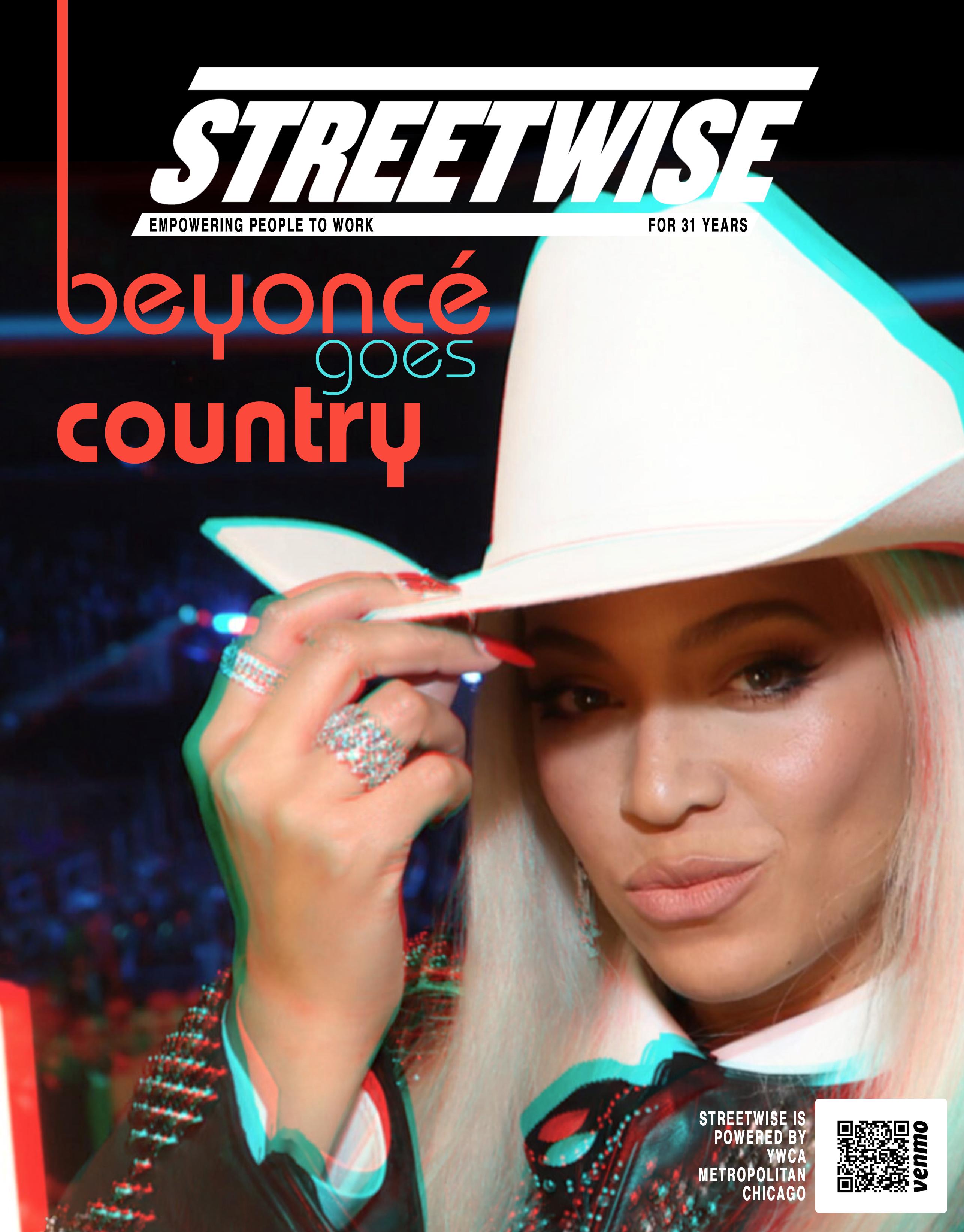
can she break the stereotypes of the genre?
March 13 - 19, 2024 Vol. 32 No. 11 $1.85 + Tips go to your Vendor $3


YOUR STATUS AT ABE.ILLINOIS.GOV.
MEDICAID?
SURE TO RENEW
ADVERTISEMENTS
CHECK
GOT
BE
EVERY YEAR!
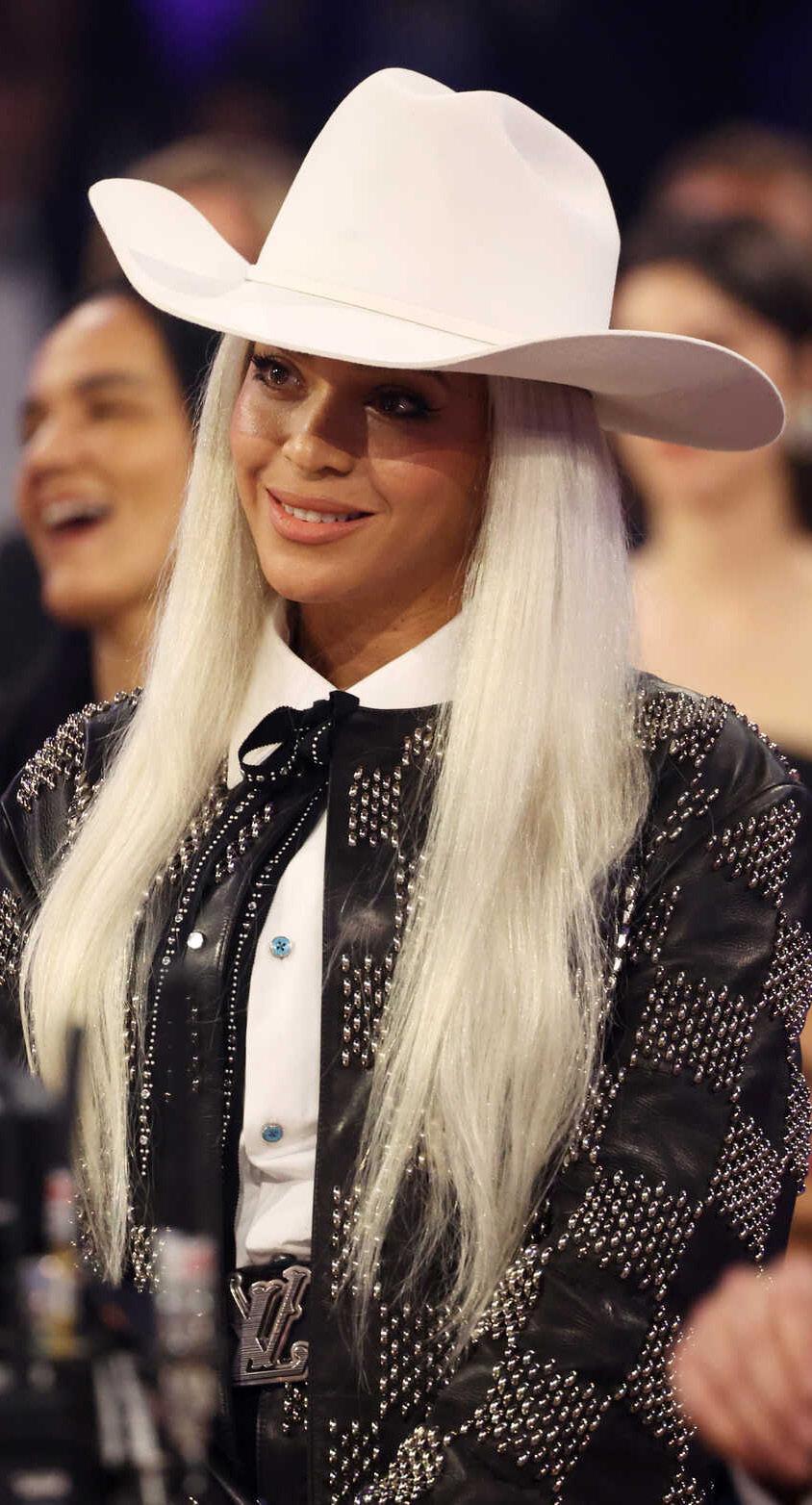




The SportsWise Team discusses the best and worst cities for the Super Bowl and gaming.
Cover Story: The Stereotypes of Country music
With Beyoncé’s foray into country music, the genre may finally break free from the stereotypes that have long dogged it. But African Americans go back to the very roots of the genre.
From
the streets
A series of three murals in the Wabash Arts Corridor celebrates women's history.
The Playground ON
DONATE To make a donation to StreetWise, visit our website at www.streetwise.org/donate/ or cut out this form and mail it with your donation to StreetWise, Inc., 2009 S. State St., Chicago, IL 60616. We appreciate your support! My donation is for the amount of $________________________________Billing Information: Check #_________________Credit Card Type:______________________Name:_______ We accept: Visa, Mastercard, Discover or American Express Address:_____ Account#:_____________________________________________________City:___________________________________State:_________________Zip:_______________________ Expiration Date:________________________________________________Phone #:_________________________________Email: StreetWiseChicago @StreetWise_CHI LEARN MORE AT streetwise.org Dave Hamilton, Creative Director/Publisher dhamilton@streetwise.org Suzanne Hanney, Editor-In-Chief suzannestreetwise@yahoo.com Amanda Jones, Director of programs ajones@streetwise.org Julie Youngquist, Executive director jyoungquist@streetwise.org Ph: 773-334-6600 Office: 2009 S. State St., Chicago, IL, 60616
14 15 Arts & Entertainment Event
4 6 8
highlights of the week! SportsWise
THE COVER & THIS PAGE: Beyoncé at the 66th
DISCLAIMER: The views, opinions, positions or strategies expressed
the authors and
are
and do not
reflect the views, opinions, or positions of StreetWise.
Grammy Awards on February 4 (Kevin Mazur photos).
by
those providing comments
theirs alone,
necessarily
ARTS & ENTERTAINMENT RECOMMENDATIONS
Compiled by Dave Hamilton
A Dance Masterclass!
La Femme Dance Festival
Red Clay Dance Company presents La Femme Dance Festival, March 14-16, featuring a special opening reception and dance masterclass with legendary three-time Emmy-nominated hip-hop and pop music choreographer Fatima Robinson (pictured). The La Femme Dance Festival brings choreographic works created by women of the Black/ African diaspora to Chicago audiences. On March 14 at 6 p.m., the festival kicks off with a VIP opening reception at The Arts Club of Chicago, 201 E. Ontario St., featuring a fireside chat with Robinson about her legendary career. On March 15 at noon., Robinson will lead a masterclass for professional dancers at Red Clay Dance Company’s Center for Excellence, 808 E. 63rd St. The festival culminates in a series of performances at the Harris Theater, 205 E. Randolph St., on March 16 at 7:30 p.m. Performances include the Chicago premiere of “Portraits in Red,” and two world premieres. VIP Festival Packages are $225, including the opening reception and a ticket to the Harris Theater performance; single VIP opening reception tickets are $175; Masterclass tickets are $50; and individual tickets for the final performance range from $25-$85 at redclaydance.com/la-femme-dance-festival
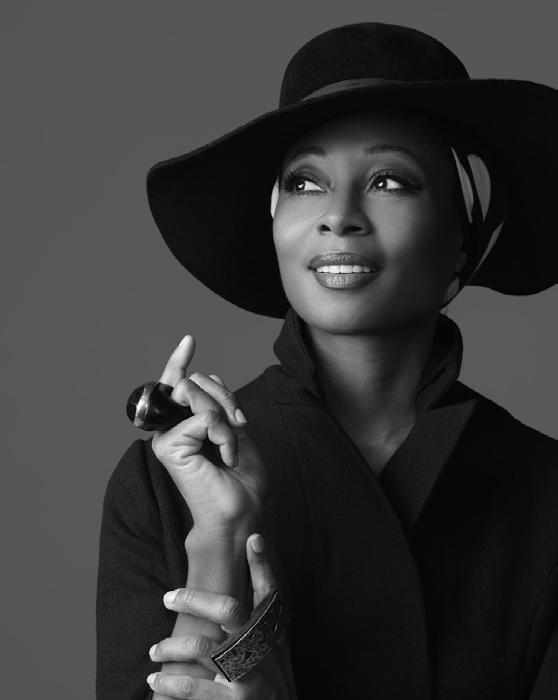
Finding a Purpose!
‘Purpose’
Steppenwolf Theatre Company presents the world premiere of “Purpose,” an epic family drama by two-time Pulitzer Prize finalist Branden Jacobs-Jenkins, directed by two-time Tony Award winner Phylicia Rashad. For decades, the influential Jasper family has been a pillar of Black American politics: civil rights leaders, pastors and congressmen. But like all families, there are cracks and secrets just under the surface. W hen the youngest son Nazareth returns home to Illinois with an uninvited friend in tow, the family is forced into a reckoning with itself, its faith and the legacies of Black radicalism. Spirited, hilarious and filled with intrigue, "Purpose" is an epic family drama. March 14 – April 21 in Steppenwolf’s Downstairs Theater, 1650 N. Halsted St. Tickets start at $20 at steppenwolf.org or the Box Office at (312) 335-1650.
A 21st-Century Reconsideration of Leopold and Loeb
History Repeating?
May 2024 marks the centenary of the murder of 14-year-old Bobby Franks by Nathan Leopold and Richard Loeb, whose sentencing hearing in the summer of 1924 riveted Chicago and the world. With Cook County State’s Attorney Robert Crowe demanding the execution of the confessed murderers, celebrated attorney Clarence Darrow stepped in to lead the defense, making history with his use of psychiatric testimony and his impassioned arguments against the death penalty. One hundred years later, this program will revisit the prosecution, defense, and sentencing of Leopold and Loeb through the lens of 21st-century ideas about juvenile criminal justice, as a panel of legal and psychiatric experts presents a sitting judge with the arguments they would make if the trial were to take place today. At the Newberry Library, 60 W. Walton St., March 14 at 6 p.m. FREE.
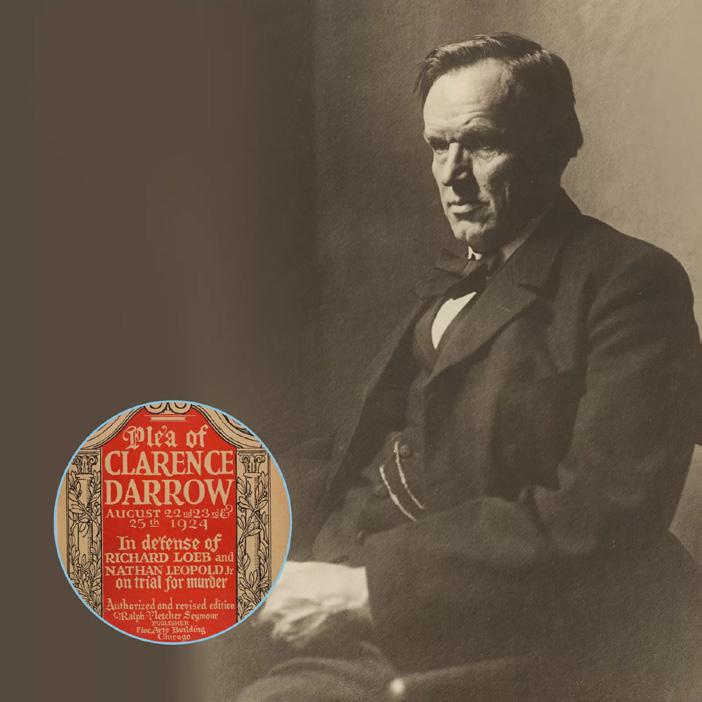
Women in Classical Music!
Chicago Sinfonietta presents ‘ECHO’ Chicago Sinfonietta celebrates Women’s History Month with "ECHO," a program that highlights women in music, at 7:30 p.m. March 16 at the Auditorium Theatre, 50 E. Ida B. Wells Drive. The program includes the Chicago premiere of Florence Price’s “Concert Overture No. 2”; Samuel Barber’s beloved “Violin Concerto” performed by the rising star Amaryn Olmeda (pictured) in her Chicago debut; Francis Poulenc’s “Les biches Suite,” a playful and evocative work that blends neoclassical and jazz elements; and the world premiere of a currently untitled piece by Clarice Assad, with the talented vocalist and composer herself performing as soloist. Don’t miss this powerful tribute to the women who have shaped the world of classical music and continue to inspire. Tickets start at $25.00 at auditoriumtheatre.org
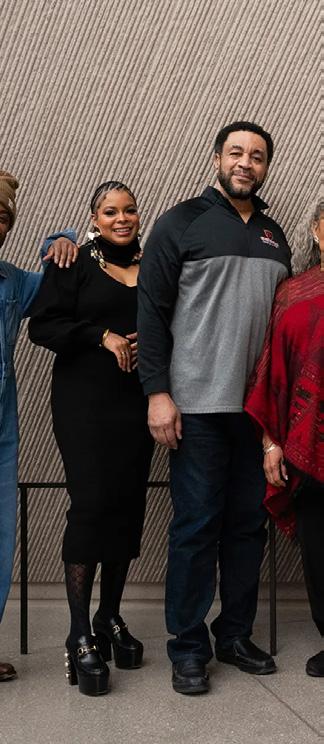


ARTS & ENTERTAINMENT
4


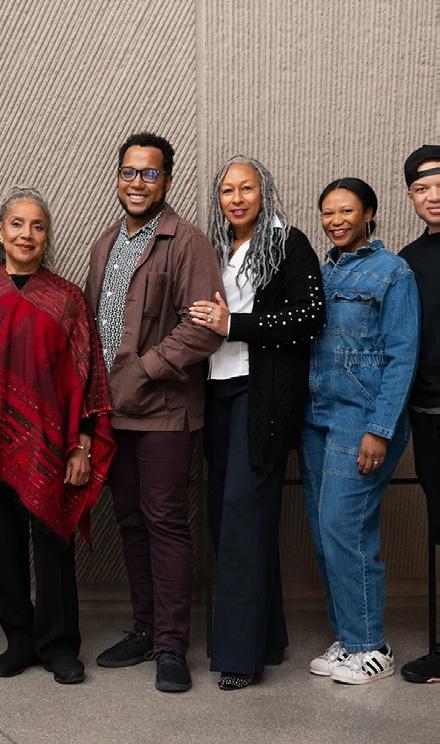
Slight of Hand!
Andi Gladwin ‘Shuffled’
Renowned British magician Andi Gladwin presents his first-ever solo production, “Shuffled” – a mesmerizing fusion of storytelling and technology – at The Rhapsody Theater Chicago, 1328 W. Morse Ave., for two weekends only, March 14-17 and March 21-24. With “Shuffled,” Gladwin encourages audience members to bring their own decks of cards for his sleight-of-hand mastery – and the already intimate venue will be reconfigured to accommodate only 44 guests per show, providing a close-up view and a special interactive experience! Gladwin welcomes any sort of card decks, “from Grandma’s bridge cards to the family Uno card game,” saying “you’ll never look at that familiar deck of cards in the same way again.” Tickets start at $45 at rhapsodytheater.com
A Chicago Tradition!

St. Patrick’s Day River Dyeing & Parade
The best place to watch the St. Patrick’s Day spectacle, now in its 69th year, is along the Chicago River between State and Columbus. The green river dyeing starts at 10 a.m. Get there early for a good view and to watch the green dye flowing from various boats. The annual Chicago St. Patrick’s Day Parade is one of the largest St. Patrick’s Day parades in the country and the centerpiece of the city’s unforgettable St. Patrick’s Day celebrations. Catch the festive procession on Columbus Drive between Balbo Drive and Monroe Drive, kicking off at 12:15 p.m.
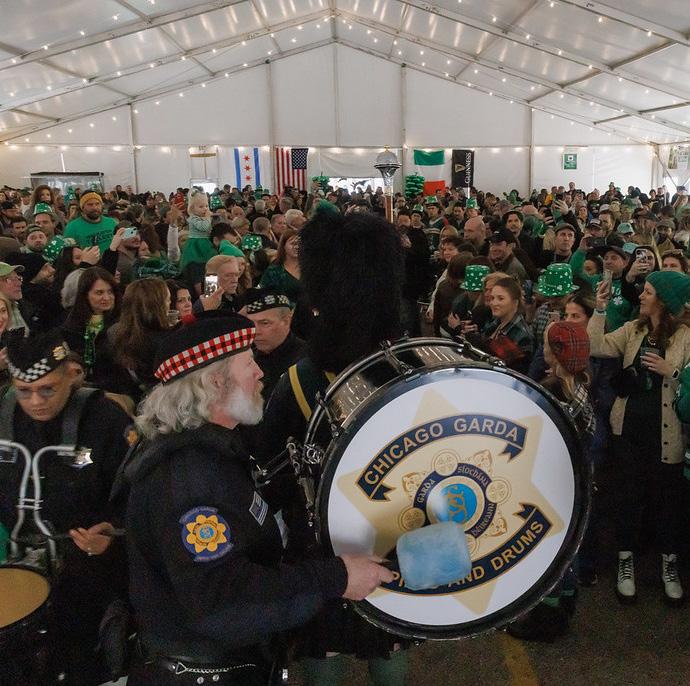

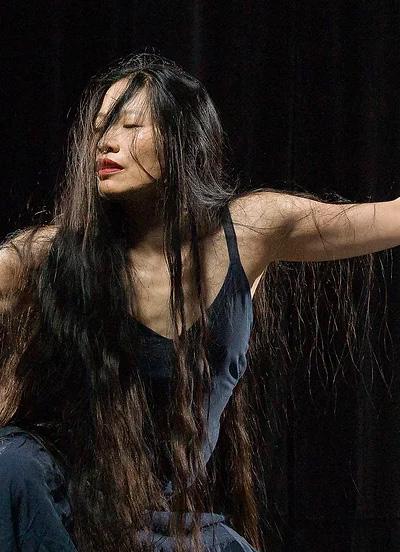

Luck of the Irish!
Shamrock’n
Shamrock’n, Old St. Pat's annual event on Saturday, March 16 from 11 a.m. – 4:30 p.m. at 625 West Adams, will be filled with Irish pub grub, music, a pint or two and even activities for the littlest of leprechauns like crafts, balloon artists and face painting! Pub Pass Tickets are $50, which includes entry, three drinks and a meal. General Entry for $25 at oldstpats.org/ shamrockntheblock.html; $30 at the door if tickets are still available. Kids 6-10 are $10 and 5 and under are free. Kids receive a free meal with entry and a Shamrock’n activity pack.
New Voices in Film!
Asian Pop-Up Cinema Season 18
Asian Pop-Up Cinema returns for its 18th edition March 20 to April 21. Each week throughout the festival is dedicated to works from a different region, with films screened in person weekends at AMC NEWCITY 14, 1500 N. Clybourn Ave., and available via streaming on weekdays. The full program for the 18th Asian Pop-Up Cinema film festival is available at asianpopupcinema.org
‘If The Sky Could Dream’ Interactive Workshop
Inside an Artist's Mind!
Visit the Heritage Museum of Asian Art, 3500 S. Morgan St., on March 16, from 1 - 2:30 p.m., to discuss and learn about the process of art making with performance artist Irene Hsiao. She will discuss the idea of her project, “If The Sky Could Dream,” an installation/performance/workshop series that celebrates the Year of the Dragon. Hsiao will explain the concept of both the installation and performance aspects of the work. Attendees will be able to work with Hsiao in this workshop, understanding the basics of performance art and how she makes her work unique. Included with $8 museum admission at heritageasianart.org

What is Old is New!
Reuse-a-Palooza at the Plant: Shamrock Edition
Bubbly Dynamics presents its spring edition of Reuse-a-Palooza at The Plant, 1400 W. 46th St., on Sunday, March 17 from 11 a.m.-3 p.m. This semiannual event provides opportunities to repair clothing and household items, safely dispose tricky-to-recycle items, and donate bicycles, gently used books, computers in any condition, and more, all the while bringing attention to strategies to reduce waste and improve environmental conditions. Learn more at insidetheplant.com
www.streetwise.org 5
The Best & Worst Football Cities
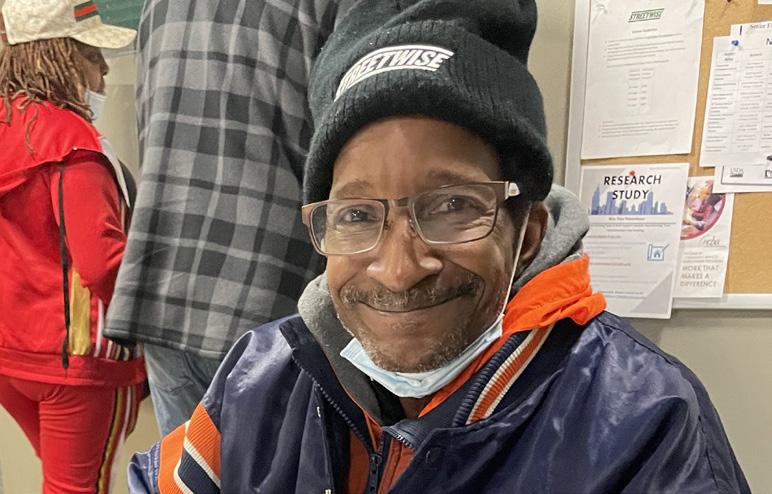
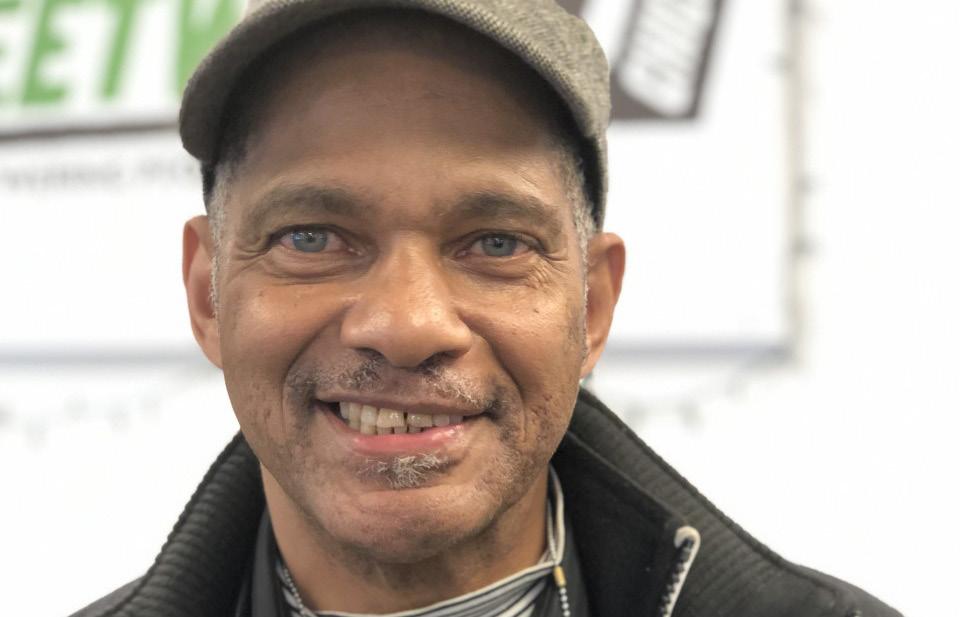
John: Today, we’re going to talk about the best and worst football cities as far as the Super Bowl and gaming.
William: If there's somebody I'm really rooting for, like the Bears or like the Chiefs this last time around, I'd rather have a Super Bowl party where just about everybody's into the game instead of someplace where everybody’s hooting and hollering so you can’t even hear the game after the first 15 minutes. If you're like me, you don't have a whole lot of money. It makes more economic sense to just watch the Super Bowl by yourself or maybe have some friends come over who want to chip in to pay for some refreshments.
John: The average Super Bowl ticket for this year was $6,680; 16.2 million Americans planned on either going to a bar or a restaurant. And there was a 192% increase over the last 20 years for a 30-second commercial.
Allen: I like what William was saying about the Super Bowl parties because they

are fun. We have some vendors that go to the Super Bowl. They stay outside and they sell StreetWise magazine. For Super Bowl LVIII, it’s estimated the economic impact was $1.1 billion. No wonder Chicago is looking for another stadium, because they want to host the Super Bowl and bring all this money to the city.
John: Wouldn’t the weather be a factor? There’s not a lot of outdoor activities in northern cities. Miami has hosted the most Super Bowls, with 11, followed by New Orleans, which will host its 11th next year, with LIX; and then Los Angeles, with eight.
Allen: I don't go to games in Chicago because it’s too cold. I prefer to sit inside and enjoy the camaraderie of a house party.
William: This should hold true everywhere because even down South, 63-de-

gree weather to them would be about what 36-degree weather would be to us.
Russell: I watch the Super Bowl at home with family and close friends. The bad thing is having to clean up. I went to two Bears games several years ago and froze. A guy said to me, “take your gloves off and give me a high 5.” I was like, “you’ve got to be crazy!”
John: Chicago is 25th among large U.S cities, according to WalletHub, for football fans. A lot of people have gaming problems, it’s true. But you can’t bet online on local college football or basketball games in Illinois – Illinois, Northwestern, DePaul, Loyola -- although you can go to the local sports book. That’s dropping the ball, because March Madness is coming up.
William: I think all sports betting should be legal in Il-
linois. You have casinos everywhere. Bally just opened one up right here in Chicago. It’s on land. If we can do that, we should be able to bet on sports.
Allen: It's all about the money: what they pay for commercials, the stadiums to host the games.
John: Chicago has to do a better job with PR as far as advertising sports because the White Sox now talk about moving to the South Loop. The Bears want to go to Arlington Heights. And as far as college is concerned, Illinois is an afterthought. Northwestern, outside of Evanston, is nonexistent as far as college sports. Michigan is like the “Big Mafia” as far as college sports in Illinois.
Any comments, suggestions or topic ideas for the SportsWise team? Email StreetWise Editor Suzanne Hanney at suzannestreetwise@yahoo.com
SPORTS WISE
Vendors (l-r) Russell Adams, A. Allen, John Hagan and William Plowman chat about the world of sports.
Wednesday May 22, 2024
12:00 Noon - 1:00 PM 77 West Washington — Chicago
Featuring:
Luciano Antonio, Guitarist
Heitor Garcia, Percussionist
Held to commemorate the lives of our neighbors who were buried by the Office of the Cook County Medical Examiner
Keynote Speaker
DR. BRAD BRAXTON
President and Professor of Public Theology for CTS Chicago
Official Greetings from Ms. Toni Preckwinkle President of The Cook County Board of Commissioners
“To live and die alone is a human tragedy, but not to be remembered and mourned after earthly life is an ugly blemish on human dignity.”
W. Earl Lewis (1949-1999) Founder, The Interfaith Memorial Service for Indigent Persons
7
ANNUAL INTERFAITH MEMORIAL OBSERVANCE
FOR INDIGENT PERSONS
38th
PLEASE COME AND JOIN A CELEBRATION OF LIFE!
LIVESTREAMED ON WWW.CHICAGOTEMPLE.ORG
With Beyoncé’s foray into country music, the genre may finally break free from the stereotypes that have long dogged it
by William Nash artist profiles by Suzanne Hanney
On Super Bowl Sunday, Beyoncé released two country songs – “16 Carriages” and “Texas Hold ‘Em” – that elicited a mix of admiration and indignation.
This is not her first foray into the genre, but it is her most successful and controversial entry. As of last February 20, Beyoncé became the first Black woman to have a No. 1 song on the country charts. At the same time, country music stations like KYKC in Oklahoma initially refused to play the record because it was “not country.”
Many non-listeners stereotype country music as being white, politically conservative, militantly patriotic and rural. And you can certainly find artists and songs that fit that bill.
But the story of country has always been more complicated, and debates about race and authenticity in country are nothing new; they’ve plagued country artists, record companies and listeners for over a century.
As someone who researches and teaches Black culture and country music, I hope that Beyoncé’s huge profile will change the terms of this debate.
To me, Beyoncé’s Blackness is not the major bone of contention here.
Instead, the controversy is about her “countryness,” and whether a pop star can authentically cross from one genre to the next. Lucky for Beyoncé, it’s been done plenty of times before. And her songs are arriving at a time when more and more Black musicians are charting country hits.
Cross-racial collaboration
Americans have long viewed country music – or, as it was known before World War II, hillbilly music – as largely the purview of white musicians. This is partly by design. The “hillbilly” category was initially created as a counterpart to the “race records” aimed at Black audiences from the 1920s to the 1940s.
But from the start, the genre has been influenced by Black musical styles and performances.
White country music superstars like The Carter Family and Hank Williams learned tunes and techniques from Black musicians Lesley Riddle and Rufus “Tee-Tot” Payne, respectively. Unfortunately, few recordings of Black country artists from the early 20th century exist, and most of those who did record had their racial identity masked.
Johnny Cash’s mentor, Gus Cannon, proves a rare exception. Cannon recorded in the 1920s with his jug band, Cannon’s Jug Stompers, and he had a second wave of success during the folk revival of the 1960s.
Similarly, the genre has always included a mix of Anglo-American and Black American musical instruments. The banjo, for instance, has African roots and was brought to America by enslaved people.
In the case of “Texas Hold ‘Em,” which begins with a lively banjo riff, Beyoncé has partnered with Grammy- and Pulitzer Prize-winning MacArthur Fellow Rhiannon Giddens, America’s foremost contemporary Black banjoist and banjo scholar. (I would argue that this choice alone undercuts objections about the track’s country bona fides.)
Different tacks to navigate race
By releasing these tracks, Beyoncé joins performers like Charley Pride and Mickey Guyton – country stars whose success has forced them to confront questions about the links between their racial and musical identities.
Instead, the controversy is about her “countryness,” and whether a pop star can authentically cross from one genre to the next. Lucky for Beyoncé, been done plenty of times before. And her songs are arriving at time when more and more Black musicians are charting country hits.
Pride, whose hits include “Kiss an Angel Good Mornin’,” “Just Between You and Me” and “Is Anybody Going to San Antone?,” became, in 1971, the first Black American to win the Country Music Association’s Entertainer of the Year award. In 2000, he was the first Black American inducted into the Country Music Hall of Fame.
But throughout his career, Pride resisted attempts to emphasize his Blackness. From his 1971 hit “I’m Just Me” to his 2014 refusal to discuss his racial “firsts” with a Canadian talk show host, Pride consistently strove to be seen as a country artist who happened to be Black, rather than as a country musician whose Blackness was central to his public persona and work.
COVER STORY
8
the controversy her “countryness,” whether can cross genre Lucky Beyoncé, it’s plenty before. songs at a more Black are country


Lesley Riddle
Lesley Riddle’s influence on The Carter Family, one of the most prominent families in country music history, show that in the messy realities of musicians making a living in the 1920s and 1930s, Black and white musicians came together and made the music richer.
Born on June 13, 1905 in Burnsville, NC, Riddle spent much of his childhood with his paternal grandparents near Kingsport, TN. He lost his leg in a cement factory accident as a teen, and became interested in the guitar and mandolin during his rehabilitation.
A.P. Carter met Riddle in the late 1920s in Kingsport. The two traveled the region to collect songs and help shape Maybelle Carter’s guitar techniques. Riddle never made his living in music, but is remembered for his contribution to the genre.
Riddle having lost a leg in an accident and Carter with a constant tremor, the duo looked a segregated South (and music industry) straight in the face as they traveled the hills of northeast Tennessee and southwest Virginia to hear and collect songs that were being sung.

Rufus "Tee-Tot" Payne
Rufus “Tee-Tot” Payne (1884-1939) mentored the younger Hank Williams during the country music superstar’s early career.
Born in rural Lowndes County, Alabama, Payne moved to New Orleans with his family when he was about 6. He learned about Blues and jazz there with no formal education. In 1915 at age 41, he returned to Alabama to perform in segregated night clubs. According to blackpast.org, Hank Williams’s family moved to Greenville, AL, Tee-Tot’s hometown, in 1934 and Williams’s mother fed Tee Tot in exchange for Hank’s guitar lessons. The Williams family moved to Montgomery in 1937 and Tee-Tot died in a charity hospital there.
www.streetwise.org 9
Beyoncé (Instagram @beyonce photo); Lesley Riddle (credit unknown/ public domain); Rufus Payne tombstone (Matthew Gargus photo).

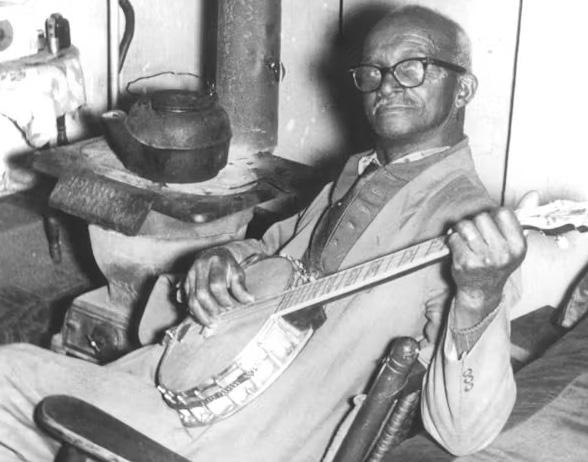
Gustavus "Gus" Cannon
Gustavus "Gus" Cannon (1883 or 1884 – 1979) was an American Blues musician who helped to popularize jug bands (such as his own Cannon's Jug Stompers) in the 1920s and 1930s. At age 12 he taught himself to play a banjo that he made from a frying pan and a raccoon skin.
Soon after, guitarist Alec Lee taught Cannon his first folk blues, "Po' Boy, Long Ways from Home", and showed him how to use a knife blade as a slide, a technique that Cannon adapted to his banjo playing. Cannon began recording as Banjo Joe for Paramount Records in 1927. Cannon's Jug Stompers was first recorded at the Memphis Auditorium for Victor Records in January 1928. Although their last recordings were made in 1930, Cannon's Jug Stompers were one of Beale Street's most popular jug bands through the 1930s. Cannon recorded for Folkways Records in 1956 and made an album for Stax Records in 1963.
At the other end of the spectrum is Guyton, who gained recognition and acclaim for songs like her 2020 hit “Black Like Me” – a frank, heartfelt commentary on the challenges she’s faced as a Black woman pursuing a career in Nashville, Tennessee.
Both Pride and Guyton reflect the zeitgeists of their respective decades. In the wake of the civil rights struggles of the 1960s, Pride’s “colorblind” approach enabled him to circumvent existing racial tensions. He chose his material with an eye toward averting controversy – for example, he eschewed love ballads, lest they be understood as promoting interracial relationships. At the start of his career, when his music was released without artist photos, Pride made jokes about his “permanent tan” to put surprised white concertgoers at ease.
Guyton’s work, on the other hand, resonated with the national outrage over the murder of George Floyd and tapped into the celebration of Black empowerment that was part of the ethos of Black Lives Matter.
And yet I cannot think of another Black musical artist with Beyoncé’s cultural cache who has taken up country music.
Some might argue that Ray Charles, whose groundbreaking 1962 album, Modern Sounds in Country and Western Music, brought legions of new listeners to country artists, is a forerunner of Beyoncé’s in this regard.
10
Cover art for Beyoncé's "16 Carrages" single (Instagram: @ beyonce photo); Gustavus "Gus" Cannon (Michael Ochs Archives); Mickey Guyton (Phylicia J.L. Munn photo); Rhiannon Giddens (Ebru Yildiz photo).
Without diminishing Charles’ significance, I expect that Beyoncé’s forthcoming Renaissance II will outshine Charles’ landmark recording.
Black country in the 21st century
Over the past five years, in addition to the buzz over Lil Nas X’s "Old Town Road,” a significant number of Black musicians – including Darius Rucker, Kane Brown and Jimmie Allen, to name a few – have charted country hits.
The Black Opry Revue, founded in 2021 by music journalist Holly G, produces tours that bring together rising Black country musicians, giving each more exposure than performing individually could.
Luke Combs’ cover of Tracy Chapman’s “Fast Car” topped the country charts and made Chapman the first Black woman to win the Country Music Association’s Song of the Year award. Their performance of the song at the 2024 Grammys went viral, demonstrating both the fluidity of genres and the power of collaboration.
Beyoncé’s loyal fan base, known colloquially as “the Beyhive,” is already propelling “Texas Hold ‘Em” to the top of the pop and country charts. While there may continue to be pushback from traditionalist country music gatekeepers, country radio executives holding sway over national broadcast networks are calling Beyoncé’s new songs “a gift to country music.”
As more and more listeners hear her directive to “just take it to the dance floor,” perhaps the sonic harmony of the country genre will translate to a new way of thinking about whether socially constructed categories, like race, ought to segregate art.
And what a revolution that would be.
William Nash is professor of American Studies and English and American Literatures at Middlebury College. Courtesy of The Conversation.

Mickey Guyton
Until 2020, if Mickey Guyton’s struggles had been turned into a country music song, its title could have been “Almost Famous,” according to CNN.com.
Guyton was the Black country music singer who almost made it when she sang at an all-star concert at the White House; almost became a star after she was nominated for an Academy of Country Music Award; and almost went big-time after music critics compared her gospel-inflected, church-honed vocals to everyone from Whitney Houston to Carrie Underwood.
“Make your songs sound really country,” she was told. “Not too R&B.” “More authentic.”
Guyton says she tried so hard to fit into other people’s expectations of a Black country star that she developed insomnia and turned to heavy drinking.
Her breakthrough came when she listened to herself. The 3 1/2-minute “Black Like Me” flipped the good ol’ boy patriotism of country music and forced listeners to consider a different perspective with its chorus:
It’s a hard life on easy street Just white painted picket fences far as you can see
If you think we live in the land of the free You should try to be Black like me

Rhiannon Giddens
Rhiannon Giddens has made a singular, iconic career out of stretching her brand of folk music, with its miles-deep historical roots and contemporary sensibilities, into just about every field imaginable. A two-time Grammy Award and Pulitzer Prize-winning singer and instrumentalist, MacArthur “Genius” grant recipient, and composer of opera, ballet, and film, Giddens has centered her work on the mission of lifting up people whose contributions to American musical history have previously been overlooked or erased, and advocating for a more accurate understanding of the country’s musical origins through art.
As Pitchfork once said, “few artists are so fearless and so ravenous in their exploration”—a journey that has led to NPR naming her one of its 25 Most Influential Women Musicians of the 21st Century.
For her highly anticipated third solo studio album, You're The One, on Nonesuch Records, she recruited producer Jack Splash (Kendrick Lamar, Solange, Alicia Keys, Valerie June, Tank and the Bangas) to help her bring this collection of songs that she'd written over the course of her career. You’re The One features electric and upright bass, conga, Cajun and piano accordions, guitars, a Western string section, and Miami horns, among other instruments.
"I hope that people just hear American music," Giddens says. "Blues, jazz, Cajun, country, gospel, and rock—it's all there. I like to be where it meets organically."
www.streetwise.org 11
three loop murals celebrate women's history
by Suzanne Hanney
Three murals in the Wabash Arts Corridor summarize women’s struggle for political equality -- amid their own fight to be seen.
The first mural, “On the Wings of Change” 1, installed in October 2021 on the south wall of 33 E. Ida B. Wells Drive, depicts a little girl looking up from a book on Illinois suffragists. It is the work of Spanish-Romanian painter Diosa (Jasmina Cazacu).
The second mural, “Speak Up!” 2, was originally proposed for the wall perpendicular to it. However, this mural was disrupted for two years by the property owner who opposed its portrayal of Kamala Harris telling Mike Pence, “I’m speaking!” during the 2020 Vice Presidential debate. “Speak Up!” and the third mural, "Votes for Women" 3, were finally installed at 623 S. Wabash Ave. last September 28.
The date offered some consolation to the Chicago Womxn’s Suffrage Tribute Committee, because it was the birthday of Frances Willard, one of the women depicted in the first mural, said Lori Osborne, a member of the committee, director of the Evanston Women’s History Project and director of the Frances Willard House Museum. The Womxn’s Committee planned the three murals in conjunction with the Wabash Arts Corridor.
“The importance of women’s voices, especially in the political process, was very dear to Willard’s heart,” Osborne said. Having grown up when it was not proper for young women to speak in the presence of men, she saw dramatic changes in women’s roles during her lifetime. As the president of the Women’s Christian Temperance Union, Willard was one of the nation’s most widely known public speakers, and she led reform in the U.S. until her death in 1898.
Illinois women instrumental to suffage
Women who worked for the right to vote were especially silenced, Osborne said, and their movement only gained ground in the early 20th century. During the 70 years that followed the Civil War, Illinois women played an outsize role in the U.S. suffrage movement. Besides Willard, others depicted in “On the Wings of Change” include: Hull House cofounder Jane Addams, lawyer Myra Bradwell, suffrage convention organizer Mary Livermore, suffrage legislation author Catharine Waugh McCulloch, labor leader Agnes Nestor, clubwoman Grace Wilbur Trout, doctor Mary Fitzbutler Waring and investigative journalist Ida B. Wells Barnett.
(2) (3)

Together, they helped make Illinois the first state east of the Mississippi River to give women limited rights to vote in 1913, which changed the course of the 1916 presidential election. As a result, the 19th Amendment passed in 1919. Illinois was the first state to ratify it, and the mural celebrates the centennial of women’s suffrage.
“Speak Up!” highlights women’s historic and continuing challenges in being talked over by men, Osborne said, while “Votes for Women,” depicts the suffragists’ yellow rose, their colors of yellow and purple, and a supporter button. “Speak Up!” is the work of Dorian Sylvain and “Votes for Women” is by AB Productions.
Michelle Duster is the great-granddaughter of Ida B. WellsBarnett. The first two murals were designed to complement each other in theme and color, but the parking lot owner refused to allow scaffolding there, Duster said.
“As an African American woman, I took particular affront. There’s a long history of our voices being obstructed.”
Parking lot owner Thomas R. Baryl, vice president of People’s Auto Parking, told StreetWise at the time that he opposed “Speak Up!” because Harris is the sitting vice president. “In this current environment, what if [former President Donald] Trump people want to put up a mural” near it. “Where do you stop?”
“Wings,” however, is “slightly political,” but its subjects are long-dead, Baryl said. “We actually thought it was important to women’s history, especially Ida B. Wells.”
12 FROM THE STREETS

A matter of integrity and legacy
Duster said completion of the project was also a matter of integrity and her personal reputation, because $100,000 had been raised for it. When the delay added to their costs and it became apparent it might take years to win their case, the Womxn’s Tribute committee sought an alternate space, still close enough to “Wings” for the messaging to be effective.
The wall at 623 S. Wabash Ave. fit the bill. Duster said she was grateful to Sylvain for sticking with them. The artist modified her design for the space, which allowed the third mural, “Votes for Women.”
“The combination of the three together really make a powerful statement,” she said.
The murals are the only large-scale public history tribute in Chicago and one of the largest projects in the U.S. to commemorate the fight for women’s inclusion in the nation’s democracy, according to prepared material. It was made possible by donations from individuals and Chicago Foundation for Women, Jane Walker by Johnnie Walker, The Harnisch Foundation, The Field Foundation, University Center, Chicago Women’s History Center and the Illinois Arts Council Agency.
Sylvain said the two-year journey had been “a labor of love. It never occurred to me not to stick with them. This was a mission we all had and had to accomplish.”
She was inspired by three women in her own life. First was her mother, Barbara Ann Sylvain, born in 1932 in an en-
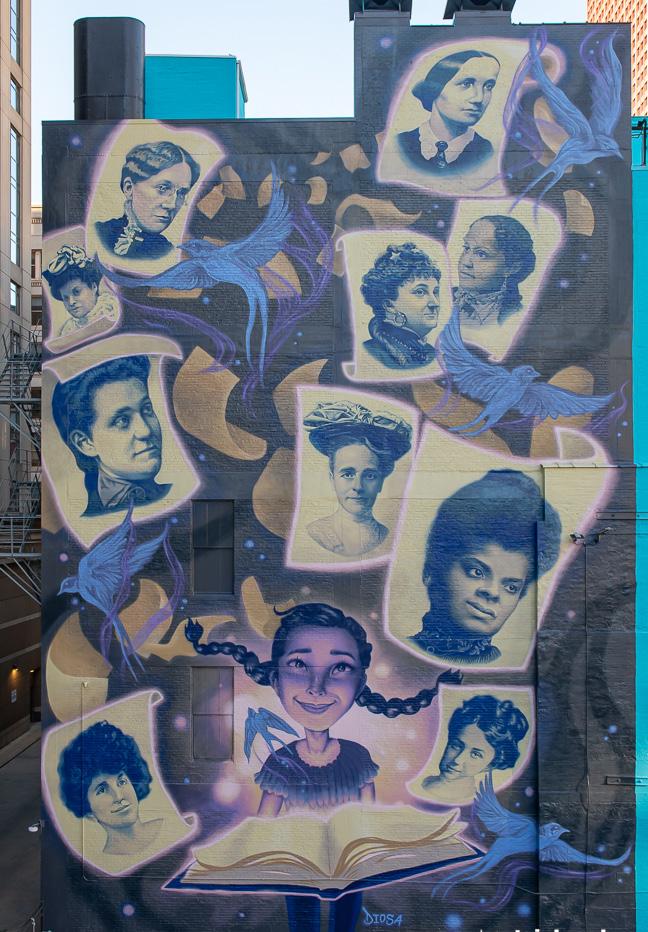
tirely different landscape for women than she herself, born in 1960. Her mother was Black, married, Catholic, but she never once imposed those barriers on her daughter, never once asked, “When are you going to find a husband?”
The other two women were Abena Joan Brown, founder of eta Creative Arts Foundation, and Margaret Burroughs, founder of the South Side Community Arts Center and DuSable Museum of African American History.
Sylvain said of Brown, “She didn’t play. She got that money, created this theater. She knew if we as a community didn’t create institutions to support our culture and the next generation, nobody was going to do it….How are we going to raise the next generation of warriors?”
Sylvain had dreamed of being part of the Wabash Arts Corridor, which is on the Columbia College campus. The murals fit what the college stands for, which is that women are a part of the community who have historically been overlooked and who have struggled to gain a measure of political equality, Columbia President and CEO Dr. Kwang-Wu Kim said.
These values make Ald. Lamont Robinson (4th ward) say he was proud to represent Columbia, “the coolest college in the world.”
As a former college professor himself, Robinson said that many young people take for granted the right to vote that was denied their grandmothers and great-grandmothers. “So nudge them to take on this thing that we should all cherish.”
www.streetwise.org 13
(1)
Left: The two murals at 623 S. Wabash Ave. with Chicago Womxn's Suffrage Tribute Committee members, l-r, Michelle Duster, Meg Duguid, Lori Osborne, Kris Nesbitt, Catherine Mardikes. Not pictured: Neysa Page-Lieberman (Suzanne Hanney photo). Right: "On the Wings of Change" mural by Diosa (Jasmina Cazacu) at 33 E. Ida B. Wells Drive (Sandra Steinbrecher photo).




©PuzzleJunction.com


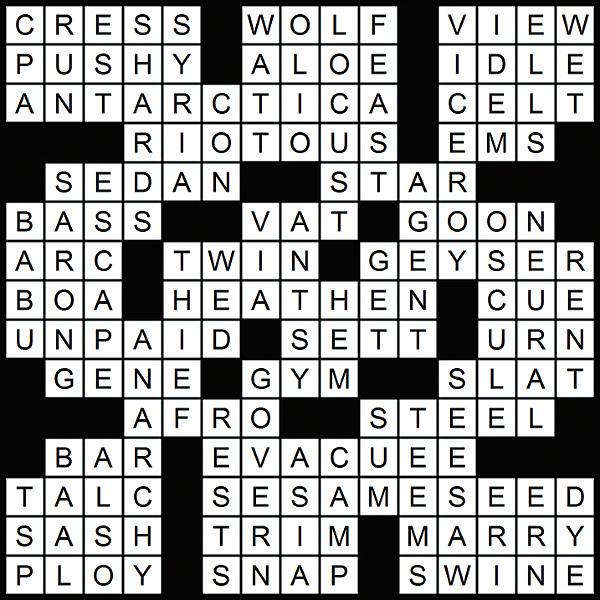
Crossword
5 Miscalculates
9 Portoferraio’s island
13 Old Italian money
14 Like some points
15 Paraphernalia
16 Tehran’s land
17 Native Australians
20 Recipe word
21 Terminate the employment of
22 Buck’s partner
23 Savage
25 Skye cap
26 River to the Colorado
27 Venue
28 Stan who created SpiderMan
29 Milk-Bone biscuit, e.g.
30 Fencing sword
31 Kipling novel
32 Muslim decrees
33 Diploma
36 Small pooch
39 Just make, with “out”
40 Prosodic foot
44 Companion of Artemis
45 Mme. across the Pyrenees
50 Wife of Saturn
51 Wedding party member
53 Private eye
54 Theatrical copy of a military uniform
56 ___ avis
57 “Airplane!” actor Robert
58 First name in mystery
59 Squeezed (out)
60 Change machine input
61 Lots of bucks
4 Chinese dynasty
5 Modern letters
6 Sticks up
7 How to store some medicines
8 Stretch marks
9 Sponge cake ingredient
10 Pacific ring
11 Discussed lightly
12 Rings of color
18 Suffix with ideal
19 Reservations
21 Putin’s yeses
41
42
43

StreetWise exists to elevate marginalized voices and provide opportunities for individuals to earn an income and gain employment. Anyone who wants to work has the opportunity to move themselves out of crisis.
StreetWise provides “a hand up, not a handout.”
New
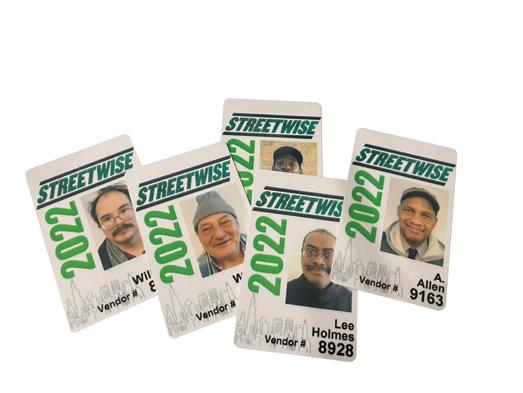
How StreetWise Works

All vendors go through an orientation focusing on their rights and responsibilities as a StreetWise Magazine Vendor. Authorized vendors have badges with their name, picture and current year.
Vendors purchase the magazine for $1.15 and sell it for $3 plus tips. The vendor keeps all of their earnings.
our


Copyright ©2024 PuzzleJunction.com Streetwise Sudoku PuzzleJunction.com Sudoku Solution
solve the Sudoku puzzle, each row, column and box must contain the Copyright ©2016 PuzzleJunction.com Sudoku Solution 1 to 9. ©2016 PuzzleJunction.com Solution 33 Criminal 34 Unite 35 “___ lost!” 36 Hire 39 Fashion line 42 Chaos 46 Rule 47 It has its ups and downs 49 Takes five 50 Total 51 Swarms 52 Canaanite deity 53 Besides 55 Part of SEATO 56 Bivouac 57 Recipe amt. 59 “___ tu” (aria for Renato) 60 Seabird 61 Food additive 54 Flood victim, at times 57 After-bath powder 58 Oil source 62 Cummerbund 63 Quick cut 64 Get a wife 65 Gambit 66 Jacket fastener 67 Lowlife Down 1 Tax pro, for short 2 Seek a seat 3 “Humanum ___ errare” 4 Fragments 5 Neighbor of Turkey 6 Light bulb unit 7 Mishmash 8 Crop eater 9 Spread 10 Monarch butterfly’s smaller kin 11 Footnote word 12 Extensions 13 Soaked 18 Hoodwink 22 South Seas attire 23 Break loose 25 Deal maker 26 Hindu Mr. 27 By way of 28 Impatient 30 Sponge opening 31 Kind of network last week's answers Streetwise 3/3/24 Crossword PuzzleJunction.com ©2024 PuzzleJunction.com 32 White House nickname 34 Mason’s burden 35 Relative of reggae 36 Symbols of industry 37 Great Plains tribe 38 Iranian
To
On the line
Like some mail
Heavy fabric with a woven design
Mouthed off 1234 5678 9101112 13 14 15 16 17 18 19 20 21 22 23 24 25 26 27 28 29 30 31 32 33 34 35 36 37 38 39 40 41 42 43 44 45 46 47 48 49 50 51 52 53 54 55 56 57 58 59 60 61 62
45
Across 1 Trodden track
Buy the Magazine, Take the Magazine
the magazine,
magazine,
When you buy
take the
and read the magazine, you are supporting
microentrepreneurs earning an income with dignity.
orientation
every Tuesday and Thursday at 10:00 a.m. at 2009 S. State St. Find your nearest vendor at www.streetwise.org
vendor
is
-or-


















































